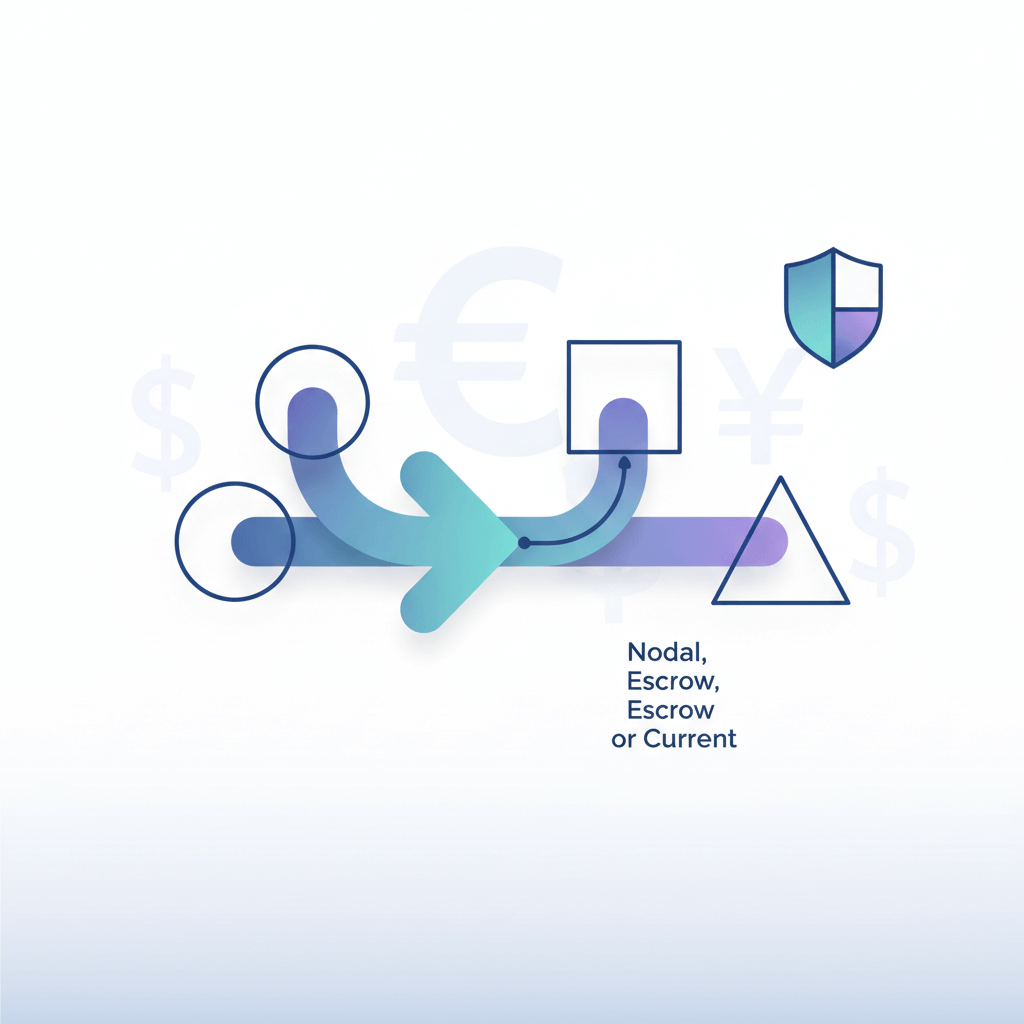Let’s explore opportunities, tailor strategies, and chart a course to financial success together.
If you are an exporter or a business dealing with international transactions, you have probably suffered the inconveniences of currency conversions. The Exchange Earners' Foreign Currency account or EEFC account may be your solution, providing a hassle-free foreign earnings management system.
So what is an EEFC account? How can it facilitate your business objectives, and is it worth opening?
This guide unpacks the essentials: what an EEFC account is, who it's for, its special features, and the step-by-step process to open one. We'll also answer some frequently asked questions to help you make an informed decision.
What is an EEFC Account?
An EEFC (Exchange Earners' Foreign Currency) Account is a Current Account that doesn't earn interest. It's managed by an Authorized Dealer Category - I Bank, such as ICICI, HDFC Bank, Axis Bank, etc. This account is designed for foreign exchange earners, like exporters. They can deposit their entire foreign earnings into this account, eliminating the need to convert foreign currency into Indian Rupees and vice versa. This helps in reducing transaction costs for account holders.
Purpose and Benefits of an EEFC Account
An Exchange Earners' Foreign Currency account is like a special bank account in India. It's made for people and businesses who earn money from other countries, especially through international trade. The main goals and benefits of having an EEFC account are:
Hold Foreign Earnings:
With an EEFC account, you can keep the money you earn in foreign currencies without having to change it into Indian rupees right away. This gives you more control over how you use your foreign money.
Avoid Exchange Rate Risks:
By having foreign money in such an account, you can try to avoid problems when the value of money changes. You can choose to change your foreign money into Indian rupees when the exchange rates are good for you.
Make International Transactions Easy:
EEFC accounts make it simple to do business with other countries. You can use your foreign money directly for certain activities, like making purchases from abroad, repaying loans taken in foreign currency, or making other allowed payments.
Encourage Foreign Earnings:
Having Exchange Earners' Foreign Currency accounts encourages people and businesses to participate in activities that earn money from other countries actively. This helps increase the overall amount of foreign money that the country has.
Simple Compliance:
Exchange Earners' Foreign Currency accounts follow the foreign money transfer rules set by the Reserve Bank of India (RBI). It's important to follow these rules to ensure that foreign exchange transactions are conducted transparently and legally, in accordance with the country's monetary policies.
Who can open an EEFC account?
Almost anyone, individuals, companies, or joint partnerships can open an EEFC account, the key requirement is that the account holder should earn foreign exchange through their export-related activities or other permissible sources. One exception to this rule is that SEZ (Special Economic Zone) units cannot open an EEFC account, they need to make do with a foreign currency account.
How to open an EEFC account as a business entity in India?
To begin the process of opening an EEFC (Exchange Earners' Foreign Currency) account for your business in India, adhere to these steps:
Step -1: Choose a Bank:
Select a bank that provides EEFC accounts. Many reputable banks in India offer this service. Consider factors like the bank's reputation, services, and proximity to your business. Our article on choosing the right bank for the most beneficial EEFC terms might help.
Step-2: Application Form:
Fill out the application form given by the bank to open an EEFC account. Make sure all information is correct and provide the necessary signatures.
Step 3: Submit the documents needed to open an EEFC account:
You would need:
- Business registration documents (e.g., Certificate of Incorporation, Memorandum, and Articles of Association).
- PAN (Permanent Account Number) of the business.
- KYC (Know Your Customer) documents for authorized signatories.
- Import Export Code (IEC) if applicable.
- A board resolution authorizing account opening and specifying account signatories.
Step-4: Approval Process:
The bank will assess your application and documents. Upon approval, they will furnish details about your new EEFC account, including the account number.
Step-5: Initial Deposit:
Make the initial deposit into the EEFC account. The minimum deposit requirement may vary among banks.
Step-6: Start Using the Account:
Once the account is activated, you can commence using it for transactions involving foreign exchange earnings. You can hold and transact in foreign currencies as per the permissible usage defined by the Reserve Bank of India (RBI).
What are the permissible credits in an EEFC account?
Permissible credits into an EEFC account include:
- Inward remittances (excluding foreign currency loans, investments, or specific obligations).
- Payments received by export-oriented units or units in special economic zones for goods sold to similar units or domestic tariff areas.
- Advance remittances for exports.
- Export payments from State Credit repayments.
- Professional earnings (directors' fees, consultancy, etc.).
- Re-credit of unutilized foreign currency.
- Trade-related loan repayments.
- Disinvestment proceeds from ADR/GDR conversions.
What are the permissible debits in an EEFC account?
Permissible debits into an EEFC account include:
- Payments for current account transactions
- Payments for capital account transactions
- Payments to export-oriented units or units in special economic zones for goods purchased.
- Customs duty payments (as per the Foreign Trade Policy).
- Trade-related loans/advances to importer customers outside India (subject to the Foreign Exchange Management Regulations, 2000).
- Payments to Indian residents for goods/services (including airfare and hotel expenses).
Uses of an Exchange Earners' Foreign Currency Account
An EEFC account is beneficial for businesses and individuals operating in foreign currency. It offers several benefits to the management of finances in international trade. The following are the key uses of an EEFC account:
SEZ Payments in Foreign Currency: When a company in the Domestic Tariff Area (DTA) trades with a Special Economic Zone (SEZ) company, it can use foreign currency for smoother transactions, promoting international trade.
Re-Crediting Unused Foreign Currency: The Exchange Earners' Foreign Currency account allows users to put back foreign currency that was taken out earlier but not used. This flexibility helps manage foreign funds efficiently.
Deposits from Share Conversion: In an Exchange Earners' Foreign Currency account, users can add funds obtained by converting shares into American Depository Receipts (ADRs) or Global Depository Receipts (GDRs). Often part of the sponsored ADR/GDR scheme by the Government of India, these deposits enrich foreign currency reserves, providing businesses with a way to diversify holdings.
Hedging against currency fluctuations: Businesses can hold the funds in their EEFC accounts by hedging against foreign exchange rate volatility. On holding foreign currency, they can mitigate risks and reduce losses arising from adverse currency movements.
Payment for International Expenses: With an Exchange Earners' Foreign Currency account, one can pay for international expenses such as business travel, international subscriptions, and training fees without the need to undergo currency conversion thereby avoiding the related costs.
Limitations of an EEFC account
- An EEFC account can get money from different countries, but it can't accept money in the form of a foreign loan or foreign investment.
- Opening an EEFC account with a bank is a lot of work and takes a long time. Banks might need several weeks to say "yes" and make the account ready to use.
- Also, when you change foreign money into Indian rupees, the cost for this service is not always clear and can be quite high.
International Virtual Account from Karbon: Modern Alternative to Exchange Earners' Foreign Currency Account
Traditional EEFC accounts may not work as a practical choice for most Indian businesses due to changing demands and increasing international trade complexities. An International Virtual Account offers a smarter, more flexible solution for managing global transactions.
Unlike EEFC accounts, which have limitations such as supporting only one currency and requiring balance maintenance, Karbon's virtual accounts offer the flexibility of no maintenance fees and no minimum balance requirements. If you are an exporter, freelancer, or even an e-commerce business, the International Virtual Account from Karbon gives you the flexibility needed to do well in international markets.
FAQ
How much interest is paid on the EEFC account?
EEFC accounts do not earn interest because they are classified as current accounts rather than savings accounts. Consequently, unlike savings accounts, which typically accrue interest, EEFC accounts are designed primarily for facilitating foreign exchange transactions, and therefore, earn no interest.
How much foreign exchange earnings can be deposited into an EEFC account?
Any amount of foreign exchange earnings can be credited to an EEFC account, subject to the condition that all balance in a calendar month is converted to Rupees by the end of the following calendar month; all approved uses or forward commitments should be accounted for during this conversion.
Are there different types of EEFC accounts?
Different types of EEFC accounts do not exist. An EEFC account is exclusively maintained as a current account with authorized banks in India. This is because their primary purpose is to facilitate easy access to foreign currency, without the complexities associated with fixed deposits or savings accounts.
Are there any restrictions on withdrawing funds in Rupees from an EEFC account?
There are no restrictions on withdrawing funds in Rupees from an EEFC account. However, any amount withdrawn in Rupees cannot be converted back into foreign currency nor re-credited to the EEFC account.
Can an EEFC account be held jointly with a resident relative?
Yes, a resident individual can hold an EEFC account jointly with a resident relative, as defined under section 2(77) of the Companies Act, 2013. The account can be held on a "former or survivor" basis, meaning the surviving account holder will retain control of the account in case of the primary account holder's death.
Is it illegal to keep foreign currency in an Exchange Earners' Foreign Currency Account in India?
No, it is not illegal. Keeping foreign money in an EEFC account in India is okay. It's designed to help people and businesses who earn money from other countries. The account lets them keep and use their foreign money, for example, to make purchases from other countries or pay back loans. So, it's not only legal but also meant to make handling foreign remittances easier for those who earn it.











